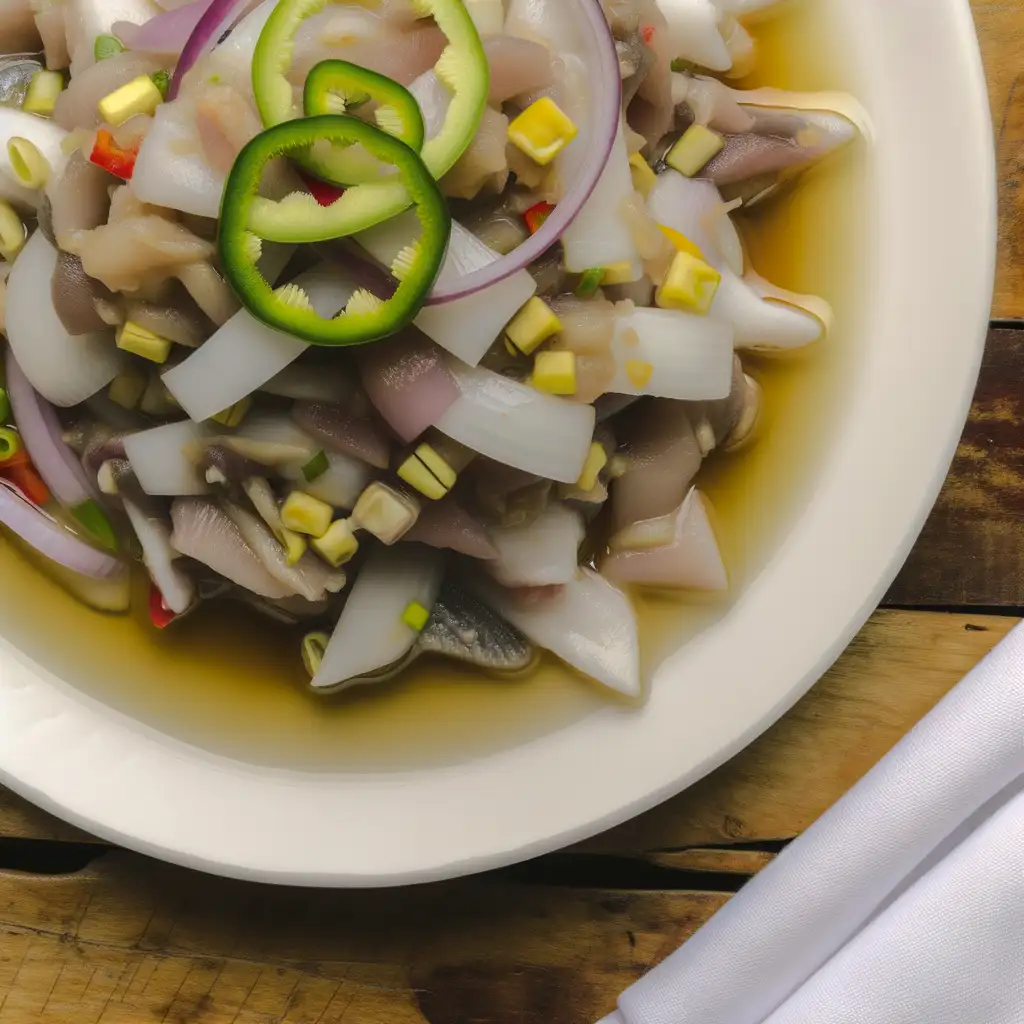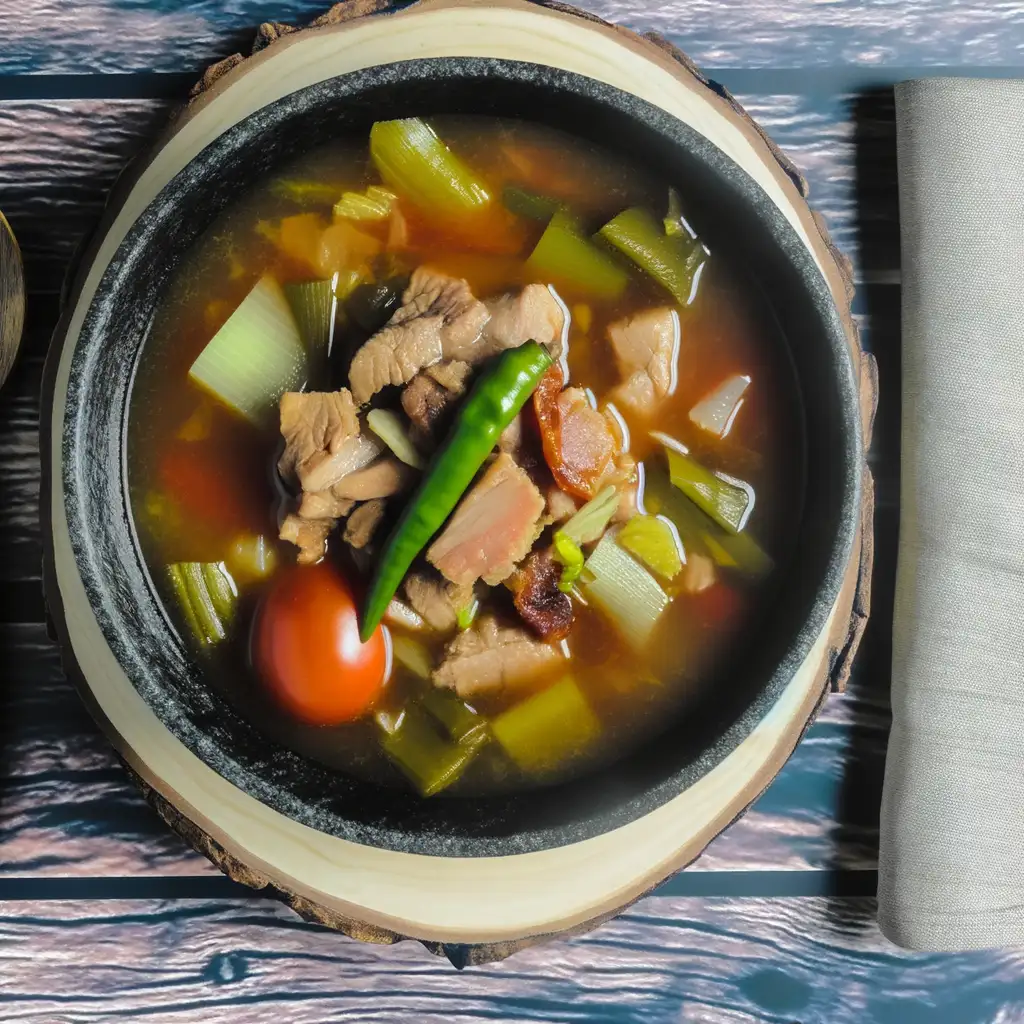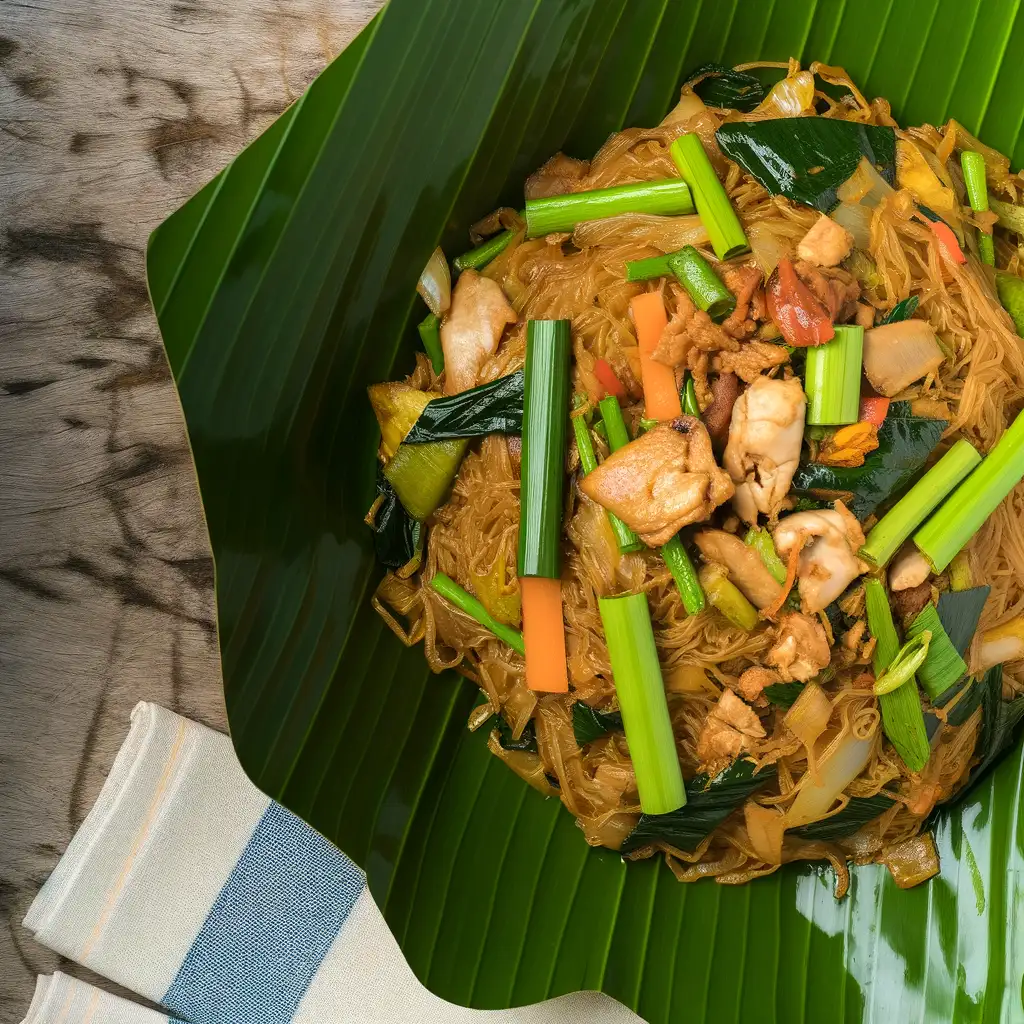



If you ever find yourself craving a place where vibrant city life meets the soothing embrace of nature,Davao is where you want to be. The moment you step into this city,there’s a warm,welcoming energy that wraps around you like a soft breeze. It’s a place where the air carries the subtle scent of tropical fruits mingling with the salty hint of the nearby sea,and where the chatter of street vendors blends effortlessly with the distant calls of birds from lush parks. Walking through Davao’s streets,you’ll notice the colorful tapestry of cultures—indigenous traditions sit comfortably alongside modern Filipino life. The city pulses with a genuine kindness; locals greet you with smiles that feel like old friends. And the food? Oh,the food! Imagine biting into a juicy durian (if you’re brave enough),or savoring fresh seafood grilled right before your eyes,bursting with flavors that tell stories of the ocean and the land. What really sets Davao apart is its balance. You can explore bustling markets filled with vibrant fruits and handmade crafts,then escape to the peaceful trails of Mount Apo or the serene shores of Samal Island in just a short drive. It’s a city that invites you to slow down,breathe deeply,and soak in the richness of its culture and nature. Trust me,Davao isn’t just a destination—it’s a feeling you’ll carry with you long after you leave.
The information on this page is currently being reviewed by Tripkliq and should be used as a guide only
Eng word: Hello
Eng pronunciation: Hello
Local language: Hello
Eng word: Goodbye
Eng pronunciation: Pah-ah-lahm
Local language: Paalam
Eng word: Thank you
Eng pronunciation: Sah-lah-maht
Local language: Salamat
Eng word: How much
Eng pronunciation: Tag-pee-lah
Local language: Tagpila
Eng word: Toilet
Eng pronunciation: Kah-sil-yas
Local language: Kasilyas
Eng word: Help me
Eng pronunciation: Tah-bahng-ee koh
Local language: Tabangi ko
Eng word: Yes
Eng pronunciation: Oh-oh
Local language: Oo
Eng word: No
Eng pronunciation: Dee-lee
Local language: Dili
Eng word: Excuse me
Eng pronunciation: Pah-sigh-loh-ah koh
Local language: Pasayloa ko
Davao City was officially founded on March 16,1937, when it was formally inaugurated as a chartered city under President Manuel L. Quezon. It is now one of the largest cities in the Philippines in terms of land area.
Davao is home to several indigenous Lumad tribes, including the Bagobo, Mandaya, and Manobo peoples. These tribes have preserved their rich cultural heritage, which is celebrated through traditional dances, crafts, and rituals.
Davao is known as the 'Durian Capital of the Philippines' due to its abundance of durian fruit, which is famous for its unique taste and aroma. Tourists can enjoy fresh durian and durian-based products in the city.
Davao is home to Mount Apo, the highest mountain in the Philippines, standing at 2,954 meters above sea level. It is a popular destination for hikers and nature enthusiasts, offering breathtaking views and diverse flora and fauna.
Davao is known as the 'Orchid Capital of the Philippines' and is famous for the Waling-Waling orchid, considered one of the most beautiful and rarest orchids in the world. It is often referred to as the 'Queen of Philippine Flowers.'
The Kadayawan Festival is Davao's most famous annual celebration, held every August. It is a thanksgiving festival that honors the city's bountiful harvest, rich culture, and the unity of its people. The festival features colorful parades, street dancing, and cultural performances.
During the early 20th century, Davao became a hub for Japanese immigrants who established abaca plantations in the area. The Japanese influence is still evident in the city, with landmarks like the Japanese Tunnel and the Japanese Peace Memorial Shrine.
San Pedro Cathedral, the oldest church in Davao, was built in 1847 during the Spanish colonial period. Its unique architecture and historical significance make it a must-visit site for tourists.
The Davao Crocodile Park is a popular tourist attraction that showcases the city's commitment to wildlife conservation. It is home to various species of crocodiles and other animals, offering educational tours and interactive experiences.
In Davao, the most common Power Adaptor is Type A, Type B.



Roasted whole pig, known for its crispy skin and tender meat, lechon is a popular dish at celebrations and gatherings in Davao.

A traditional Filipino ceviche made with fresh raw fish marinated in vinegar, citrus, and spices, often served as an appetizer.

Grilled tuna jaw, a local specialty in Davao, known for its rich flavor and tender texture, often served with a dipping sauce.

A sour pork soup made with tamarind, tomatoes, and various vegetables, sinigang is a beloved Filipino comfort food that showcases the local flavors.

A type of stir-fried noodle dish served on a banana leaf, typically made with rice noodles, vegetables, and meat, popular in the region.

A refreshing dessert made from young coconut, pandan-flavored jelly, and sweetened cream, perfect for the tropical climate of Davao.

Known as the 'king of fruits', durian is famous for its strong odor and unique taste. Davao is one of the top producers of this fruit in the Philippines.
Imagine stepping into a place where history hums through the streets and the ocean breeze carries the scent of salty adventure—that’s Cebu City for you. The moment you arrive,there’s this lively energy that wraps around you,a mix of old-world charm and modern buzz. You’ll find yourself wandering through colorful markets where the chatter of vendors blends with the aroma of freshly grilled street food—think sweet,smoky lechon sizzling over coals,tempting you at every corner.
Cebu’s character is a beautiful blend of the past and present. Ancient Spanish forts and centuries-old churches stand proudly alongside sleek cafes and vibrant street art. The city pulses with warmth,not just from the tropical sun but from the people who greet you with genuine smiles and stories. At night,the streets light up with music and laughter,and you can almost taste the festive spirit in the air.
What really makes Cebu unforgettable is how it feels alive in every sense. You can hear the waves crashing nearby,see the colorful jeepneys weaving through traffic,smell the tropical fruits at the market,and feel the warmth of the sun on your skin as you explore. It’s a place where culture,history,and everyday life blend seamlessly,inviting you to dive in and experience its vibrant soul firsthand.
If you ever find yourself craving a place where nature’s calm meets a laid-back island spirit,Puerto Princesa is where you want to be. The moment you step off the plane,there’s this warm,salty breeze that wraps around you,carrying the faint scent of the sea and tropical blooms. It’s a city that doesn’t rush — people move with a gentle rhythm,and the streets hum softly with the chatter of locals and the occasional strum of a guitar from a nearby café. It feels like a breath of fresh air,both literally and figuratively.
What really makes Puerto Princesa stand out is its deep connection to nature. The famous Underground River is just the beginning — lush mangroves,crystal-clear waters,and vibrant coral reefs surround the city,inviting you to explore. You can hear the calls of exotic birds in the morning and watch fishermen bring in their catch as the sun dips low,painting the sky in shades of pink and orange. The food scene here is a delightful surprise too — fresh seafood grilled right on the beach,sweet tropical fruits bursting with flavor,and local dishes that tell stories of the sea and the land.
But beyond the sights and tastes,it’s the people who make Puerto Princesa unforgettable. Their warmth and genuine smiles make you feel like you’re not just visiting,but truly welcomed. Whether you’re wandering through the bustling market or sharing a laugh with a vendor,there’s a sense of community that lingers long after you leave. It’s a place that invites you to slow down,soak in the simple joys,and leave with a heart full of stories.
Manila is this vibrant,bustling heart of the Philippines that grabs you the moment you step off the plane. There’s an energy here that’s both chaotic and warm,like the city is alive and breathing with stories waiting to be discovered. Walking through its streets,you’ll catch the scent of sizzling street food mingling with the salty breeze from Manila Bay. The soundscape is a lively mix of jeepneys honking,street vendors calling out their wares,and the occasional laughter spilling from a nearby sari-sari store.
What makes Manila truly special is its rich tapestry of history and culture woven into everyday life. You can wander through Intramuros,the old walled city,and feel the echoes of Spanish colonial days in the cobblestone streets and centuries-old churches. Then,just a few blocks away,modern skyscrapers rise,showcasing the city’s dynamic spirit. The people here are incredibly warm and welcoming,always ready to share a story or recommend their favorite spot for halo-halo,a sweet,icy treat that’s perfect for cooling down in the tropical heat.
Manila’s charm lies in its contrasts—the old and new,the quiet moments in hidden courtyards and the lively buzz of night markets. It’s a place where you can savor rich Filipino flavors,dive into vibrant festivals,and feel the pulse of a city that’s constantly evolving but never loses its heart. If you want a trip that’s full of life,color,and genuine warmth,Manila’s waiting with open arms.
If you ever find yourself wandering through the heart of Bohol,Tagbilaran City greets you with a warm,unhurried rhythm that feels like a gentle hug after a long journey. The city hums with life—not the overwhelming buzz of a metropolis,but a lively,welcoming energy where jeepneys rattle by and street vendors call out their fresh fruit and local snacks. As you stroll along the waterfront,the salty breeze carries the faint scent of grilled seafood mingling with tropical flowers,inviting you to slow down and savor the moment.
Tagbilaran’s charm lies in its blend of old and new. You’ll catch glimpses of Spanish-era churches standing proudly beside colorful markets where locals barter over ripe mangoes and sticky rice treats. The city’s pulse is deeply tied to its people—friendly,easygoing,and proud of their heritage. At night,the streets light up with laughter and music spilling from small eateries where you can taste the rich flavors of Boholano cuisine,like the sweet,tender kalamay or freshly caught fish cooked with coconut milk.
What really stays with you is the city’s sense of community and its connection to the sea. Whether you’re watching fishermen haul in their catch at dawn or joining a lively fiesta,Tagbilaran feels like a place where stories are shared over steaming cups of coffee and where every corner invites you to discover a new layer of its soul. It’s not just a stopover—it’s a place that quietly pulls you in and makes you want to stay a little longer.
If you ever find yourself craving a place where history hums softly alongside the buzz of everyday life,Iloilo City is where you want to be. The moment you step into its streets,there’s this warm,inviting energy—like the city is gently nudging you to slow down and savor its stories. You’ll notice the colonial-era buildings standing proudly beside modern cafes,their facades telling tales of centuries past. The air carries a subtle mix of salty sea breeze and the sweet aroma of freshly baked pan de sal,making every morning feel like a comforting embrace.
Walking through Iloilo,you’ll hear the lively chatter of locals,the clinking of glasses in cozy eateries,and the distant strum of guitars from street performers. The city’s character shines brightest in its festivals,especially the Dinagyang,where vibrant costumes and rhythmic drums fill the streets with infectious joy. But even on quieter days,the genuine smiles of Ilonggos and their easygoing hospitality make you feel like you’ve found a second home.
And then there’s the food—oh,the food! From the rich,savory batchoy served steaming hot in humble noodle shops to the sweet,creamy taste of fresh mangoes,every bite is a celebration of local flavors. Iloilo isn’t just a place to visit; it’s a place to experience,where every corner invites you to pause,breathe,and fall a little in love with its soul.
Dubbed 'Asia's Latin City,' Zamboanga offers a unique cultural experience and access to the pristine pink sand beaches of Sta. Cruz Island.
ExploreScammers may install skimming devices on ATMs to steal card information from unsuspecting users.
Unlicensed money changers may offer attractive exchange rates but shortchange tourists during the transaction.
Tourists renting motorbikes, bicycles, or other equipment may be falsely accused of damaging the item and asked to pay exorbitant repair fees.
Scammers may pose as representatives of charities, asking tourists for donations that never reach the intended cause.
Vendors may sell counterfeit or low-quality items as authentic local crafts at inflated prices.
Individuals posing as tour guides may offer their services to tourists, only to provide little value or demand additional fees mid-tour.
Some establishments may charge tourists significantly higher prices than locals for the same food or drinks.
Some taxi drivers may refuse to use the meter and instead charge tourists a flat, inflated rate for short distances.
Crowded areas like markets or public transportation hubs can be hotspots for pickpockets targeting distracted tourists.
Children or adults may approach tourists with emotional stories to solicit money, which may not go to those in need but to organized groups.
The Philippines has extremely strict anti-drug laws, and Davao City is no exception. The possession, use, or distribution of illegal drugs is heavily penalized, with severe consequences including long prison sentences or even the death penalty for trafficking. Tourists should avoid any involvement with drugs while in the city.
Davao City has one of the strictest anti-smoking ordinances in the Philippines. Smoking is prohibited in all public places, including streets, parks, government offices, public transportation, and enclosed spaces such as restaurants and bars. Designated smoking areas are rare and must comply with strict regulations. Violators can face fines or imprisonment.
Vaping is treated similarly to smoking under Davao City's anti-smoking ordinance. The use of e-cigarettes and other vaping devices is prohibited in public places, and there are strict rules about where vaping is allowed. Tourists should avoid vaping in public to avoid penalties.
What are other people saying about Davao?
Recent Social posts about Davao
There is nothing to show you for now.